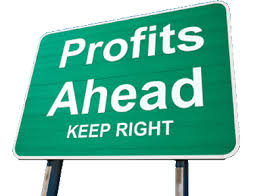 With over half of the year gone and the 4th quarter around the corner, now is a critical time
to assess and project profitability metrics for 2015. There is still
time to make changes to impact your bottom line for 2015 that will carry into next year. Entrepreneurs gravitate to measuring
growth, increasing revenues, or focusing on daily operations when
assessing current and projected financial information provides vital
information to increase corporate value.
With over half of the year gone and the 4th quarter around the corner, now is a critical time
to assess and project profitability metrics for 2015. There is still
time to make changes to impact your bottom line for 2015 that will carry into next year. Entrepreneurs gravitate to measuring
growth, increasing revenues, or focusing on daily operations when
assessing current and projected financial information provides vital
information to increase corporate value.We've encountered many new clients that say they are trying to grow their company first and then focus on profits later because they've heard the old adage that their business will lose money the first couple years. That may be the case for those with poor planning, or who assume the worst - FIRST! Yet the truth is that both need to be assessed simultaneously, and a sound financial strategy needs to be put in place to ensure the viability of the company and maximize its value in the long term.
While there are many metrics that should be monitored to understand the true health of your business, every CEO should keep a close eye on these top three metrics:
Gross margin is an important metric to understanding profitability. Gross margin helps identify variances in production costs or inefficiencies in managing labor costs. Reviewing this metric over several intervals will identify where inefficiencies occur or where costs can be lowered and/or renegotiated with suppliers. The gross margin is also impacted by sales price and validates when changes are necessary.
Net profit margin: which illustrates the portion of profit generated from each sale. This is likely the most vital data point in understanding profitability. This metric reveals efficiencies, economies of scale, as well whether or not your overhead expenses are in line with your performance.
Most business owners are very aware of their current cash balance; however, they typically do not understand the dynamics of their Cash Flow. Part of your statement of cash flow, the cash flow from operations line, describes the cash being generated by the business operations, over a defined period of time. While a company may show a positive trend with net profit margin, a negative trend in accounts receivables or lack of management of accounts payable, can easily alter the cash flow of a company.
So many times, an owner says “My income statement shows that I am making money but I don’t understand why the physical cash isn’t there”. Since cash flow problems are most typically the culprit of failing companies, you can see why this metric made the list of those most important to track.
At Envision Tax & Accounting we are prudent in our efforts to increase our client’s bottom line to ensure their business success. Let us help you enjoy your envisioned business.